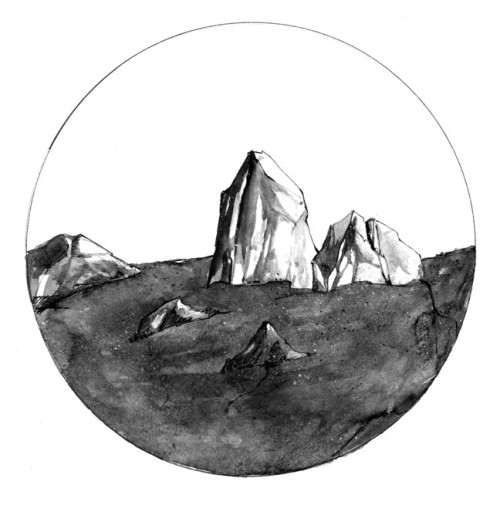
It’s an odorless, colorless gas; you can’t see it, smell it, or taste it. As one wag once put it, it’s just the thing to require a bunch of government regulation.
But it’s also the number one cause of lung cancer for non-smokers. The villain in question is radon, a radioactive gas released by uranium in our rocks and soils that finds its way into our basements, wells, and houses. If you breathe in enough of it over time, chances are it’ll do you no good.
Wait a minute, uranium? In New Hampshire and Vermont? Yep. Uranium isn’t locally abundant only in Seabrook and Vernon. Uranium is, in fact, quite common in the ground beneath our feet – not in the concentrations required to make a bomb or power a reactor, but more than enough to make its presence known.
Uranium is a large element, much larger than the common elements in the majority of our rocks, such as silicon, calcium, oxygen, and even iron. It’s too big to fit into the crystals that hold these other elements, and so it tends to be left until the last minute when crystals are forming in molten rock. At that point, the other crystals just sort of brick around the uranium to hold it in place.
If uranium is one of the last kids picked for the mineral team, then granite is one of the last kids picked for the rock team – it tends to be formed by the dregs of molten rock.
Perhaps you can see where this is leading: uranium is left to the end when minerals are forming, granite is left to the end when rocks are forming out of minerals, and hence uranium and granite often go together. We have a lot of granite in New Hampshire and Vermont, and now you get the picture.
At the dawn of the nuclear age, there was talk of mining uranium from the famous pink Conway granite of the White Mountains. But like gold, another large element that doesn’t easily fit in with our common elements, uranium is rarely mined straight out of igneous rock. Instead, geologists look for places where erosion, hydrothermal activity, or other natural processes have concentrated uranium into enriched deposits. States in the American West like Wyoming are famous for these areas; states in New England are not.
But if uranium has been under our feet for millions of years around here, how come radon has only recently been added the lineup of villains? The answer, in part, is apparent to anyone who has ever lived in an old house – ventilation. Only a generation or two ago, most of us worked outside much of the time, lived in drafty houses, and drank water from shallow, dug wells. These days, most of us work inside, insulate our houses as best we can, and, if we need well water, drill wells hundreds of feet deep into the bedrock to get it. Radon gas seeps in through our foundations or hitches a ride in with the well water, and the result is that radon can be trapped and concentrated in our houses and businesses.
It is common (though not legally required) these days for buildings to be tested for radon whenever they change hands. If your house hasn’t ever been tested, you might want to look into it – try www.healthyvermonters.info or www.dhhs.state.nh.us/DHHS/RADON/default.htm. The radon hot spot in Vermont is the southern Green Mountains, where the granitic roots of the mountain range are exposed. In New Hampshire it’s the White Mountain area, with its multi-aged, granite-family bedrock. But your results may vary; not all granite emits radon, and not all radon comes from granite.
Back to the Conway granite for a moment. Although radon may be undetectable to the human eyes and nose, uranium can be indirectly observed throughout the White Mountains, especially in the east. Hold a fresh chunk of this pinkish rock up to your eye for a moment – don’t worry, there isn’t that much uranium in it – and you’ll see three distinct minerals: a pink one (feldspar), a black one (mica), and a gray one (quartz).
Quartz crystals are usually clear like glass, not gray. There is enough uranium in Conway granite – in this case, bricked in with the black mica crystals – that tens of millions of years of radiation have distorted the quartz crystals enough that they no longer transmit light very well. The result is called “smoky quartz” and is clear proof that there is uranium in the rock. And also proof that this whole radon business isn’t a government conspiracy.

